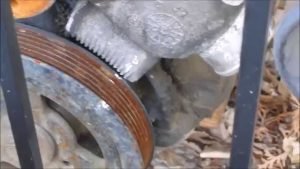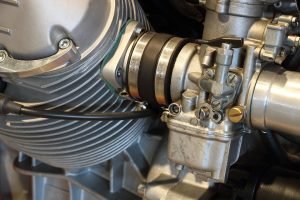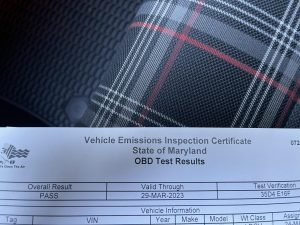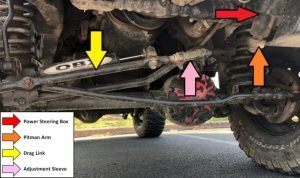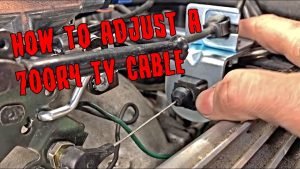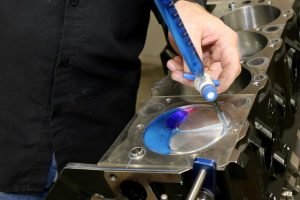
Contents
- Ceramic Coating vs. Wax: Which Protects Your Car Better in 2025?
- Wax: The Temporary Shield
- Ceramic Coating: The Long-Term Investment
- Step-by-Step Guide to Waxing (DIY)
- Common Mistakes to Avoid with Waxing:
- Step-by-Step Guide to Ceramic Coating Application (Professional Advice Recommended)
- Common Mistakes to Avoid with Ceramic Coating:
- The Verdict: Which is Right for You?
- FAQ
- Related Articles
Ceramic Coating vs. Wax: Which Protects Your Car Better in 2025?
Keeping your car’s paint gleaming and protected is a priority for many car owners. But with so many options available, choosing between a ceramic coating and wax can be confusing. This article will break down the key differences between these two popular paint protection methods to help you make the best decision for your vehicle in 2025.
The Core Difference: Think of it this way: wax is like sunscreen for your car – it provides a temporary layer of protection. Ceramic coating is more like a tattoo – a long-lasting, bonded layer that becomes part of the paint’s surface.
Wax: The Temporary Shield
Wax is a relatively inexpensive and readily available option. It’s easy to apply and provides a nice shine, temporarily protecting your car’s paint from environmental contaminants like dust, dirt, and light UV damage.
Pros of Wax:
- Easy application: A DIY-friendly option, requiring minimal specialized tools.
- Affordable: Significantly cheaper than ceramic coating.
- Regularly replenishable: You can reapply wax as needed, typically every few months.
Cons of Wax:
- Short-lived protection: Its protective layer lasts only a few weeks or months, requiring frequent reapplication.
- Less durable: It offers weaker protection against scratches, etching, and harsh weather conditions.
- Requires more frequent maintenance: You’ll need to wax your car much more often than with a ceramic coating.
Ceramic Coating: The Long-Term Investment
Ceramic coating is a significantly more advanced and durable paint protection solution. It chemically bonds with the car’s paint, creating a hard, hydrophobic layer that repels water, dirt, and other contaminants.
Pros of Ceramic Coating:
- Long-lasting protection: A single application can last for several years (typically 2-5, depending on the type and application).
- Superior protection: Offers significantly better protection against scratches, etching, UV damage, and chemical stains.
- Self-cleaning properties: The hydrophobic nature of the coating makes it easier to wash off dirt and grime.
- Enhanced shine: Provides a deep, glossy shine that surpasses what wax can achieve.
Cons of Ceramic Coating:
- Expensive: Ceramic coating application is considerably more expensive than waxing.
- Professional application recommended: While some DIY kits exist, professional installation generally yields better results.
- More complex application process: The application requires careful preparation and precise techniques.
Step-by-Step Guide to Waxing (DIY)
- Wash and dry your car thoroughly: Remove all dirt, debris, and contaminants.
- Apply wax in thin, even layers: Work in small sections, using a quality applicator pad.
- Allow the wax to haze: This usually takes a few minutes, as per the product instructions.
- Buff off the excess wax: Use a clean, soft microfiber towel, working in gentle, overlapping motions.
- Admire the shine!: Enjoy the enhanced look and temporary protection.
Common Mistakes to Avoid with Waxing:
- Applying wax in direct sunlight: This can lead to streaking and uneven application.
- Using too much wax: This makes buffing difficult and can leave residue.
- Using dirty or abrasive cloths: This can scratch the paint.
Step-by-Step Guide to Ceramic Coating Application (Professional Advice Recommended)
While DIY ceramic coating is possible, it’s strongly advised to seek professional installation. The process is complex and demands precision:
- Thorough decontamination: This often involves multiple washing, clay barring, and iron remover steps to achieve a perfectly clean surface.
- Paint correction (Optional): Removing minor imperfections like swirls and scratches will improve the final look and longevity.
- Surface preparation: This crucial step ensures optimal adhesion of the coating.
- Coating application: This involves carefully applying the ceramic coating in thin, even layers, often with specific curing times between layers.
- Curing and inspection: The coated surface needs time to fully cure, after which a thorough inspection is done.
Common Mistakes to Avoid with Ceramic Coating:
- Inadequate surface preparation: This is the most common reason for coating failure.
- Incorrect application technique: Improper application can lead to uneven coverage, streaking, and reduced durability.
- Ignoring curing times: Rushing the curing process can compromise the coating’s performance.
The Verdict: Which is Right for You?
The best choice depends on your budget, your commitment to car maintenance, and your desired level of protection. Wax is a great option for those seeking a quick, affordable, and easily replenishable solution. Ceramic coating is the superior choice for long-term, high-level paint protection, though it represents a significant upfront investment. Consider your priorities and choose accordingly!
FAQ
Q. What is ceramic coating, and how does it differ from wax?
A. Ceramic coating is a liquid polymer that chemically bonds to your car’s paint, creating a hard, protective layer. Wax, on the other hand, sits on top of the paint as a physical barrier. Ceramic coatings offer significantly more durability and protection against scratches, UV rays, and chemical etching than wax, which needs more frequent reapplication.
Q. How long does a ceramic coating last compared to wax?
A. A high-quality ceramic coating can last for several years (2-5 years or even longer, depending on the product and maintenance), while wax typically lasts only a few weeks or months at most, depending on weather conditions and washing frequency.
Q. Which is more expensive: ceramic coating or waxing?
A. Ceramic coating is significantly more expensive upfront than waxing. The application process is more involved and requires specialized equipment and expertise. However, the long-lasting nature of ceramic coating can make it a more cost-effective choice in the long run.
Q. Does ceramic coating require special maintenance?
A. While ceramic coatings are durable, they still require maintenance. Avoid harsh chemicals and abrasive cleaners when washing. Regular washing with a pH-neutral car wash soap helps maintain the coating’s shine and hydrophobic properties. Some coatings might need a maintenance treatment every year or two. Wax, in comparison, needs frequent reapplications to maintain protection.
Q. Which offers better protection against scratches and swirl marks?
A. Ceramic coating offers far superior scratch and swirl mark protection compared to wax. Its hard, glass-like surface is much more resistant to abrasion. While wax provides some protection, it’s far less effective against these types of damage.
Q. Is ceramic coating suitable for all car paint types?
A. While ceramic coatings generally work well on most paint types, it’s always best to check the product specifications to ensure compatibility. Some coatings may not be suitable for certain paint finishes or wraps. It’s advisable to consult with a professional detailer if you have any concerns about the suitability of a ceramic coating for your specific car.
Q. Can I apply ceramic coating myself, or should I hire a professional?
A. While DIY ceramic coating kits exist, professional application is generally recommended for optimal results. Proper surface preparation and even application are crucial for achieving a flawless, long-lasting finish. Improper application can result in streaking, uneven coverage, and reduced protection.
Related Articles
Exploring the Differences – Limited Slip vs Posi Traction – Which is Right for Your Car?
Introduction When it comes to enhancing your car’s performance and handling, the choice between Limited Slip and Posi Traction differentials is …
How do I know which radiator cap to buy?
When it comes to choosing the right radiator cap for your vehicle, making an informed decision is crucial. The radiator cap plays a crucial role in ma…
Why is my radiator building up too much pressure?
Excessive pressure in your radiator can be a cause for concern as it can lead to potential damage to your heating system. If you have noticed that the…
Affiliate Disclosure: As an Amazon Associate, I earn from qualifying purchases made through links on this site.

